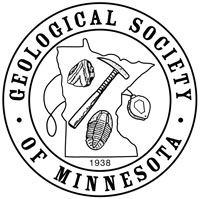Fall Banquet - Geology of the Mississippi River Gorge
Seminar Lab Date:
Seminar Lab presenter:
Seminar Lab Subject:
Seminar Lab Location :
2725 University Ave SE, Minneapolis, MN 55414
Banquet 5 PM CT, Annual Meeting 6:30 PM, Lecture 7 PM
Seminar Lab Details:
The first meeting of the Geological Society of Minnesota for 2024-2025 is the Fall Banquet at U Garden Restaurant (http://www.ugardenrestaurant.com/), 2725 University Ave SE, Minneapolis, MN 55414, (612) 378-1255, near the East Bank U of MN campus. This is the same location as the Spring Banquet held in May, 2024. The restaurant is on the north side of University Ave SE, east of 27th Ave SE. Map There is a free parking lot behind the restaurant.
The banquet starts at 5:00 PM. No reservation or registration is needed. We recommend the buffet, which is priced at $19.95 + tax & tip. Hot tea and other beverages (except water) are extra. Ordering from the menu at the posted price is also an option. To make payment easy, we encourage everyone to plan to pay using cash. The restaurant does not accept checks.
You may come for just the lecture, skipping the meal if you wish; however we encourage you (including non-members) to enjoy the meal also, as the restaurant appreciates our business in return for hosting this event.
During the banquet, the Video Library will be open for returns and rentals as usual.
Following the banquet, around 6:30 PM will be our Annual Meeting, during which the membership will elect new Board members to replace those leaving the Board. Starting around 7 PM, will be our first lecture of 2024-2025. As with all GSM lectures, this lecture is free and open to the public.
Summary:
Minnehaha Falls is the geological crown jewel of Minneapolis Parks. This talk will cover the geological and human history of the park. It will provide background for walking tours of the park later this fall.
The geological story of the park is in two acts. The first is the Ordovician, about 450 million years ago. The St. Peter Sandstone, Glenwood Shale, and Platteville Limestone are all exposed in the park. All were deposited into the epicontinental seas that flooded this part of Minnesota at the time.
The second act occurred about 10,000 years ago. The lower glen of Minnehaha Creek was carved by St. Anthony Falls, and the upper glen by Minnehaha Falls.
Minnehaha Falls Park was established in 1883 as part of the Grand Rounds of Minneapolis Parks. The talk will include an overview of its history.
Randy will conclude with a short "teaser" on a field trip to northern New Mexico that he and Joanie Furlong are planning for spring 2025.
Biography: Randy Strobel has been a member of the Geological Society of Minnesota for 15 years, and has presented multiple times for the GSM. He enjoys organizing field trips for the GSM, both locally and to faraway places. He is a Professor Emeritus of Natural Sciences at Metropolitan State University in St. Paul.
